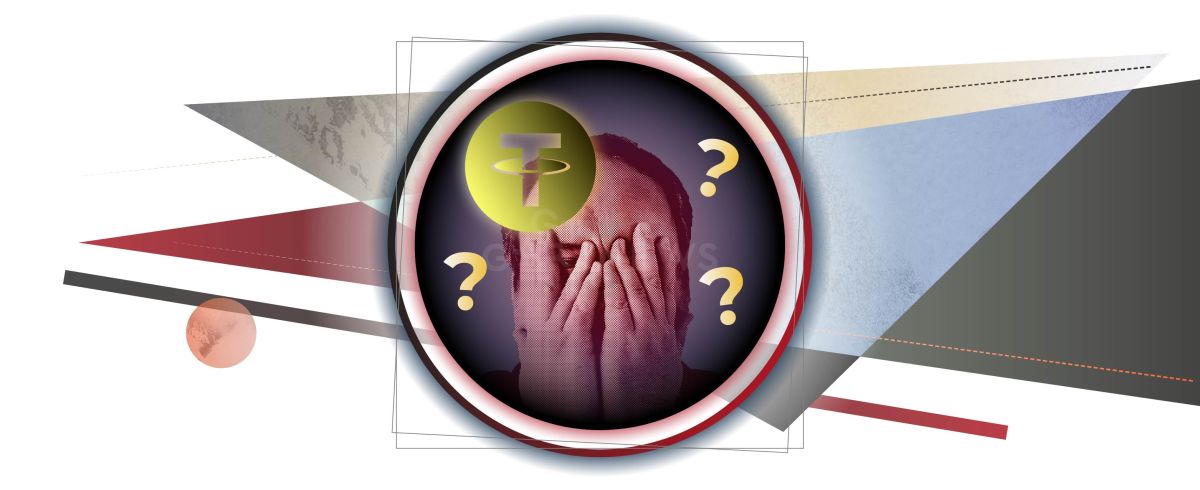USDT. Could the largest stablecoin collapse?

The value of “ordinary” cryptocurrencies is formed by supply and demand. The buyers’ orders move the price upwards by “eating up” the sellers’ orders, and vice versa in case of a drawdown.
On this page
Stablecoin is a coin pegged to a real asset’s price. It can be USD, gold, euro, whatever. What matters is that 1 such token is actually backed by one unit of an asset.
Top 7 stablecoins in terms of market capitalization (according to Coingecko)
The largest stablecoin issuer of the U.S. dollar is Tether. The market capitalization of USDT amounts to a cosmic $67 billion. Such a high figure often begs the question – is every token really backed by currency?
USDT’s closest competitors, USDC (Circle and Coinbase coin) and BUSD (Binance’s digital dollar), provide timely reporting, where the share of cash is the highest in collateral. At the same time, Tether has not provided a full audit of its reserves for 4 years. The full audit was conducted only last year.
In May 2019, Tether’s chief lawyer released a written statement noting that the USDT stablecoin was only 74% backed by fiat funds. And on February 27 of that year, the company revamped its USDT token collateral policy by including “the cash equivalents as well as other assets and loan income that the company has provided to third parties.”
Tether’s largest reserves audit is dated 31/12/2021. According to its results, USDT's collateral consists of the following blocks:
- 44% – short-term U.S. treasury bills;
- 9% – cash and bank deposits;
- 31% – corporate bonds with a term of up to 1 year;
- 16% – long-term bonds, precious metals, undisclosed investments marked “including digital assets.”
The 3rd and 4th items are of the most significant concern. In October 2021, Bloomberg published an article expressing suspicion that most of the short-term bonds in collateral are owned by Chinese companies that tolerate financial accounting. The last 16% implies that digital currencies could back USDT, the value of which is based on market sentiment.
In May 2022, the de-pegging of the UST algorithmic stablecoin, the issuer of which is (or it would be better to say was) the Terra blockchain platform, took place. As a result of market manipulation, the UST exchange rate deviated from its US dollar peg, and the mechanism for securing LUNA with coins caused the blockchain to mint millions of new, unsecured LUNA tokens to cover the UST equivalent shortage. The result was predictable. Both UST and the native Terra blockchain token depreciated completely, leaving millions of investors with nothing.
This incident caused a short-term panic among USDT holders, who “de-pegged” the token from other stablecoins by nearly 10% on May 12 in a series of sales and conversions.
(USDT de-pegging on May 12, 2022)
The coin’s exchange rate soon recovered to market values.
Could USDT share the fate of UST and lose purchasing power completely?
Apparently not. Centralization, as a mechanism to keep the largest “stables” running, makes it impossible to secure tokens with volatile assets. Even if we assume that USDT is backed by a whopping 10-15% of illiquid bonds or digital currencies, the remaining reserves still consist of fiat funds. In the worst-case scenario, the USDT exchange rate will deviate from the $1 figure by 4-5%. And arbitrageurs will quickly take advantage of this as an opportunity to make easy money.
There is another scenario: Tether’s fiat collateral is compromised, and the company has to cover the deficit by selling or pledging other blocks – for example, U.S. treasury bills. In the long term, it will lead to dilution of capitalization and an increase of the share of “loans to third parties”, and the high panic of users will force Tether to suspend the cashing out of USDT-USD at a ratio of 1:1. Financial regulators will use the situation and start the company’s bankruptcy proceedings, which will force users to either sell the token at a loss or wait for the final division of property after all the legal costs.
But this situation is really fantastic. Moreover, it can be modeled for every centralized stablecoin, not just USDT.
UPD: On June 30, 2022, the largest auditor, BDO, confirmed the USDT stablecoin collateral and reported sufficient fiat reserves. What’s more, Tether and accounting firm BDO have agreed that USDT reserve status reports will be updated 3 times more frequently – on a monthly basis instead of quarterly.
From a global perspective, even the most vulnerable stablecoins are not “scammed” in 1 day and give everyone a chance to leave the sinking ship with short-term returns of value. Even UST went back to $0.99 after the first de-pegging, then cascaded gradually to the bottom.
This is crypto, and those who are patient often take the money of panickers. Don’t be a hamster and manage your funds wisely, even if they are just stablecoins.
The content on The Coinomist is for informational purposes only and should not be interpreted as financial advice. While we strive to provide accurate and up-to-date information, we do not guarantee the accuracy, completeness, or reliability of any content. Neither we accept liability for any errors or omissions in the information provided or for any financial losses incurred as a result of relying on this information. Actions based on this content are at your own risk. Always do your own research and consult a professional. See our Terms, Privacy Policy, and Disclaimers for more details.



























